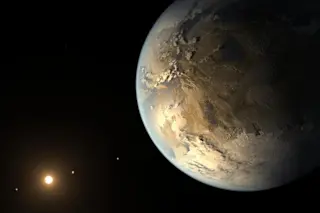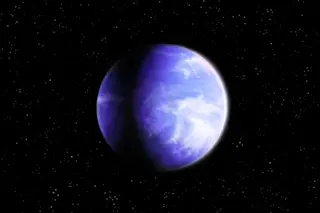If you want to know what scientists are thinking about, you don’t need to ask—all you need to do is count. That’s what I did as I was touring the Long Beach Convention and Entertainment Center in Long Beach, California, where the American Astronomical Society is currently holding its semi-annual meeting. I tallied meeting abstracts, scientific sessions, press conferences, and (more impressionistically) casual conversations in the pannini-and-pizza lunch area. So what is on the mind of the world’s greatest explorers of the cosmos? By any measure, the answer comes down to one word: exoplanets.
An illustration depicts the compact solar system KOI-961, home to several small exoplanets. Photo courtesy of NASA. “Exoplanet” is the technical term for any planet that does not circle the sun—or, to put it another way, any planet that lies beyond the bound of our solar system. Two decades ago, nobody was sure such worlds even ...













